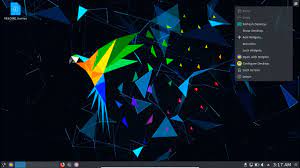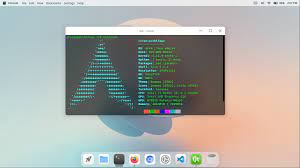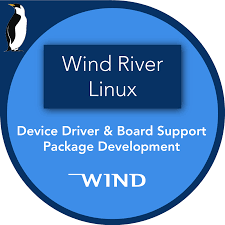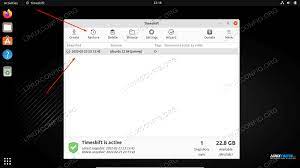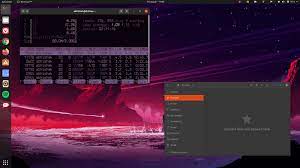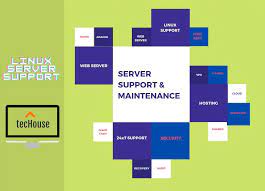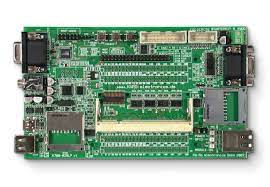Building a Fortified Future: Embracing the Secure Linux Platform
Title: The Power of a Secure Linux Platform
Introduction:
In an increasingly interconnected world, where digital threats loom large, the need for a secure operating system cannot be overstated. Linux, renowned for its stability, versatility, and open-source nature, has emerged as a robust platform that prioritizes security. In this article, we will explore the key features that make Linux a secure choice and why it has become the go-to operating system for individuals and organizations seeking heightened protection.
Open-Source Advantage:
One of the primary reasons Linux is considered highly secure is its open-source nature. With thousands of developers worldwide contributing to its codebase, vulnerabilities are quickly identified and patched. The transparency of the open-source model allows for extensive peer review, making it harder for malicious actors to exploit weaknesses in the system.
Robust User Permissions:
Linux employs a robust user permission model that ensures granular control over system access. By using file permissions and user groups effectively, administrators can restrict access to critical files and directories, reducing the risk of unauthorized modifications or data breaches.
Regular Security Updates:
Linux distributions are known for their prompt security updates. Developers actively monitor vulnerabilities and release patches regularly to address any potential threats. This commitment to timely updates ensures that users can benefit from ongoing protection against emerging security risks.
Mandatory Access Control (MAC):
Linux offers additional security through Mandatory Access Control frameworks like SELinux (Security-Enhanced Linux) or AppArmor. These frameworks enforce strict policies on file access, network communication, and process execution, adding an extra layer of protection against unauthorized actions by both users and applications.
Sandboxing Applications:
With Linux’s strong focus on security, sandboxing applications have become commonplace. Sandboxing isolates applications from each other and from sensitive parts of the operating system, preventing them from causing harm if compromised. This approach significantly reduces the impact of potential security breaches.
Secure Package Management:
Linux distributions utilize robust package management systems, such as RPM (Red Hat Package Manager) or DPKG (Debian Package Manager). These systems ensure that software installations and updates are verified and authenticated, minimizing the risk of installing malicious or tampered packages.
Community Support:
The Linux community is known for its active engagement in security matters. With a vast network of experienced users, administrators, and developers, Linux users benefit from an extensive knowledge base and readily available support. Community-driven forums and resources provide valuable insights into best practices, security tips, and troubleshooting assistance.
Conclusion:
In an era where cyber threats continue to evolve, having a secure operating system is paramount. Linux’s commitment to open-source collaboration, robust user permissions, regular security updates, Mandatory Access Control frameworks, sandboxing applications, secure package management systems, and strong community support make it a highly secure platform. Whether you’re an individual user or an organization looking for a reliable and secure operating system choice, Linux offers the peace of mind you need in today’s digital landscape. Embrace the power of Linux and experience a secure computing environment that puts your safety first.
7 Essential Tips for Securing Your Linux Platform
- Ensure you have the latest security updates and patches installed on your Linux platform.
- Use strong passwords and two-factor authentication whenever possible.
- Use a firewall to protect against external threats such as hackers and malware.
- Limit access to only those users who need it, using permissions and user groups where possible.
- Encrypt sensitive data stored on the system with encryption tools such as GPG or OpenSSL
- Regularly audit your system for any potential vulnerabilities or malicious activity using security scanners like Lynis or ClamAV
- Monitor user activity on the system to detect any suspicious behaviour or unusual activity
Ensure you have the latest security updates and patches installed on your Linux platform.
Article: The Importance of Installing Security Updates on Your Linux Platform
Keeping your Linux platform secure is crucial in today’s digital landscape, where cyber threats are constantly evolving. One of the most effective ways to ensure the security of your Linux system is by regularly installing the latest security updates and patches. In this article, we will explore why staying up to date with security updates is essential and how it contributes to a more secure Linux platform.
Security updates and patches are released by Linux distributions to address vulnerabilities and fix any weaknesses that could potentially be exploited by malicious actors. These updates often include critical bug fixes, vulnerability patches, and enhancements to the overall security infrastructure of the operating system.
By regularly installing these updates, you benefit from several key advantages:
Patching Known Vulnerabilities: Security updates are designed to address known vulnerabilities in the operating system or associated software packages. Hackers constantly search for these vulnerabilities to exploit them for their malicious activities. By promptly applying security updates, you close off these potential entry points, significantly reducing the risk of a successful attack.
Protection Against Emerging Threats: Cyber threats are continually evolving, with new attack vectors and techniques emerging all the time. Security updates help protect your Linux platform against these rapidly evolving threats by implementing countermeasures and strengthening existing security measures. Regularly updating your system ensures that you stay one step ahead of potential attackers.
Improved Stability and Performance: Security updates not only enhance the security of your Linux platform but also improve its stability and performance. Developers often include bug fixes and performance optimizations as part of their security update releases. By keeping your system updated, you can enjoy a smoother user experience while ensuring a secure computing environment.
To ensure you have the latest security updates installed on your Linux platform, follow these best practices:
Enable Automatic Updates: Most Linux distributions offer automatic update mechanisms that can be configured to install security updates automatically. Enabling this feature ensures that you receive critical updates as soon as they become available, without the need for manual intervention.
Regularly Check for Updates: If automatic updates are not enabled, make it a habit to regularly check for updates using your distribution’s package manager. Schedule routine checks to ensure you don’t miss any important security updates.
Stay Informed: Keep yourself informed about security vulnerabilities and advisories related to your Linux distribution. Subscribe to security mailing lists or follow trusted sources of information that provide timely updates on new threats and patches. This knowledge will help you prioritize and install critical security updates promptly.
Remember, the security of your Linux platform is a shared responsibility between the developers and the end-users. While developers strive to release timely security updates, it is crucial for users to install these updates promptly to maintain a secure system.
By making sure you have the latest security updates and patches installed on your Linux platform, you take a significant step towards fortifying your system against potential threats and ensuring a safer computing experience. Stay proactive, stay updated, and enjoy the benefits of a secure Linux platform.
Use strong passwords and two-factor authentication whenever possible.
Title: Strengthening Your Linux Security: The Power of Strong Passwords and Two-Factor Authentication
Introduction:
In an era where cyber threats are ever-present, fortifying your Linux security is of utmost importance. While Linux already offers robust security features, there are additional steps you can take to enhance your protection. One such crucial measure is the use of strong passwords and two-factor authentication (2FA). In this article, we will delve into the significance of these security practices and how they contribute to creating a secure Linux platform.
The Importance of Strong Passwords:
A strong password acts as a formidable barrier against unauthorized access to your system. When creating passwords, it is essential to follow best practices such as using a combination of uppercase and lowercase letters, numbers, and special characters. Avoid easily guessable information like birthdates or common phrases. Additionally, ensure that your passwords are unique for each account or service you use.
By implementing strong passwords, you significantly reduce the risk of brute force attacks or dictionary-based hacking attempts. It becomes much more challenging for malicious actors to crack your passwords and gain unauthorized access to sensitive data.
The Power of Two-Factor Authentication (2FA):
While strong passwords provide an initial layer of defence, two-factor authentication adds an extra level of security by requiring users to provide additional verification beyond just a password. This method typically involves combining something you know (password) with something you have (a physical device like a smartphone).
When enabled, 2FA provides an additional step in the authentication process. After entering your password, you will be prompted to enter a unique code generated by an authentication app or received via SMS. This ensures that even if someone manages to obtain your password, they still need physical access to your secondary device or mobile number for successful login.
By implementing 2FA on your Linux platform, you significantly reduce the risk posed by stolen or compromised passwords. Even if someone gains access to your password, they would still need the second factor to authenticate themselves.
Best Practices for Strong Passwords and 2FA:
To maximize the effectiveness of your security measures, consider the following best practices:
- Use a password manager: Password managers generate and store complex passwords securely, eliminating the need to remember multiple passwords.
- Regularly update your passwords: Set a reminder to change your passwords periodically, especially for critical accounts.
- Enable 2FA whenever possible: Many online services and Linux applications offer 2FA as an option. Take advantage of this additional layer of security wherever available.
Conclusion:
The importance of strong passwords and two-factor authentication cannot be overstated in today’s digital landscape. By implementing these security practices on your Linux platform, you significantly enhance your protection against unauthorized access and potential data breaches. Remember to create unique, strong passwords for each account and enable 2FA whenever possible. By making these simple yet effective choices, you reinforce the security of your Linux system and safeguard your valuable information from malicious threats.
Use a firewall to protect against external threats such as hackers and malware.
Title: Strengthening Your Linux Security: Harness the Power of Firewalls
Introduction:
In today’s digital landscape, where cyber threats are ever-present, protecting your Linux system against external threats is of paramount importance. One effective measure to bolster your security is to utilize a firewall. In this article, we will explore the significance of firewalls and how they can safeguard your Linux platform against hackers and malware.
The Role of Firewalls:
A firewall acts as a barrier between your computer or network and the vast expanse of the internet. It monitors incoming and outgoing network traffic, scrutinizing every data packet for potential threats. By enforcing predefined security rules, firewalls effectively filter out malicious connections, unauthorized access attempts, and suspicious activities.
Protecting Against Hackers:
Firewalls play a crucial role in thwarting hacking attempts. They analyze incoming traffic and block any unauthorized access attempts from external sources. By maintaining a list of trusted IP addresses or employing advanced techniques such as Intrusion Detection Systems (IDS) or Intrusion Prevention Systems (IPS), firewalls add an extra layer of defense against hackers trying to exploit vulnerabilities in your system.
Safeguarding Against Malware:
Malware poses a significant threat to Linux systems, making it vital to implement robust protection mechanisms. Firewalls act as a first line of defense by preventing malware-infected files from entering your network or system. They can also detect suspicious outbound connections initiated by malware, limiting its ability to communicate with command-and-control servers.
Configuring Your Firewall:
Linux distributions often come with built-in firewall solutions like iptables or nftables. These tools allow you to define rules that determine which network traffic is allowed or denied based on various criteria such as IP addresses, ports, protocols, or application-specific rules. Properly configuring your firewall settings ensures that it works optimally for your specific security needs.
Additional Considerations:
While firewalls provide valuable protection against external threats, it is important to remember that they are just one piece of the security puzzle. Regularly updating your system, using strong passwords, employing secure network practices, and practicing safe browsing habits are equally crucial in maintaining a secure Linux environment.
Conclusion:
As the digital landscape becomes increasingly complex, fortifying your Linux platform against external threats is essential. Implementing a firewall acts as a vital line of defense, protecting you from hackers and malware attempting to compromise your system. By diligently configuring and maintaining your firewall settings, you can significantly enhance the security of your Linux environment. Embrace this powerful tool and enjoy peace of mind knowing that your Linux system is shielded against external threats.
Limit access to only those users who need it, using permissions and user groups where possible.
Title: Enhancing Linux Security: Limiting Access to Users Who Need It
Introduction:
When it comes to securing your Linux platform, one of the fundamental principles is limiting access only to those users who require it. By implementing proper permissions and user groups, you can significantly enhance the security of your system. In this article, we will explore the importance of restricting access and how permissions and user groups can be effectively utilized to bolster your Linux platform’s security.
The Principle of Least Privilege:
The principle of least privilege advocates granting users only the minimum level of access necessary to perform their tasks. By adhering to this principle, you reduce the risk of unauthorized actions or accidental modifications that could compromise system integrity or expose sensitive data.
Implementing User Permissions:
Linux provides a robust user permission system that allows administrators to define precisely what actions individual users can perform on files, directories, and system resources. By assigning appropriate permissions, such as read, write, or execute, you can control who has access to specific files or directories.
For example, sensitive configuration files or critical system directories should only be accessible by trusted administrators with elevated privileges. Regular users should have limited access rights to prevent unintended modifications that could impact system stability or introduce security vulnerabilities.
Utilizing User Groups:
User groups are a powerful tool in managing permissions and access control on a Linux platform. By grouping users based on their roles or responsibilities, you can assign common permissions and restrictions more efficiently.
For instance, if you have a team of developers working on a project, creating a dedicated user group for them ensures that they have the necessary access privileges for project-related files while preventing them from interfering with other critical areas of the system.
Regularly Reviewing Access Rights:
It is crucial to periodically review and update user permissions and group assignments. As personnel changes occur within your organization or project, ensure that access rights are adjusted accordingly. Revoking unnecessary privileges from users who no longer require them helps minimize potential security risks.
Additional Security Measures:
While limiting access through permissions and user groups is a critical aspect of securing your Linux platform, it should be complemented by other security measures. Regularly updating the system, implementing strong passwords, enabling firewalls, and utilizing intrusion detection systems are all essential practices to fortify your overall security posture.
Conclusion:
In the realm of Linux security, limiting access to only those users who truly need it is a fundamental step towards safeguarding your system. By implementing effective permissions and user groups, you can reduce the risk of unauthorized actions and protect sensitive data from accidental or intentional compromise. Remember to regularly review and adjust access rights as personnel changes occur within your organization. By combining this practice with other robust security measures, you can create a fortified Linux platform that enhances protection against potential threats in today’s digital landscape.
Encrypt sensitive data stored on the system with encryption tools such as GPG or OpenSSL
Protecting Sensitive Data on Linux: The Power of Encryption
In the digital age, safeguarding sensitive data has become an utmost priority. Linux, known for its robust security features, offers a range of encryption tools that enable users to protect their valuable information from unauthorized access. One such method is encrypting sensitive data stored on the system using tools like GPG (GNU Privacy Guard) or OpenSSL.
Encryption acts as a shield, transforming readable data into an unreadable format that can only be deciphered with the appropriate decryption key. By encrypting sensitive files and folders on your Linux system, you add an extra layer of security, ensuring that even if someone gains unauthorized access to your data, they won’t be able to make sense of it without the decryption key.
GPG (GNU Privacy Guard) is a widely-used encryption tool that provides strong cryptographic capabilities. It utilizes public-key cryptography, where two separate keys are used – a public key for encryption and a private key for decryption. With GPG, you can encrypt individual files or entire directories with ease. This tool also allows you to digitally sign files to verify their authenticity and integrity.
OpenSSL is another powerful encryption tool available on Linux systems. Originally designed as a Secure Sockets Layer (SSL) and Transport Layer Security (TLS) toolkit, OpenSSL also provides command-line utilities for file encryption and decryption. It supports various cryptographic algorithms and offers flexibility in terms of customizing encryption parameters.
To encrypt sensitive data using GPG or OpenSSL, start by generating your own set of encryption keys. Keep your private key secure and share your public key only with trusted parties who need to decrypt your encrypted files. Once you have your keys in place, you can use these tools to encrypt specific files or directories by simply running the appropriate commands in the terminal.
By encrypting sensitive data stored on your Linux system, you ensure that even if an attacker gains physical or remote access to your files, they will be rendered useless without the decryption key. This adds an extra layer of protection, particularly when it comes to safeguarding personal information, financial records, or confidential business data.
Remember to regularly back up your encryption keys and securely store them in a separate location. Losing your keys could result in permanent data loss, as encrypted files cannot be decrypted without the corresponding keys.
In conclusion, encryption tools such as GPG and OpenSSL provide Linux users with a powerful means to protect sensitive data stored on their systems. By encrypting files and directories, you fortify your security measures and ensure that your valuable information remains inaccessible to unauthorized individuals. Embrace the power of encryption on your Linux platform and take control of your data’s security.
Regularly audit your system for any potential vulnerabilities or malicious activity using security scanners like Lynis or ClamAV
Title: Enhancing Linux Security: Regular System Audits for Peace of Mind
Introduction:
As the digital landscape becomes increasingly complex, ensuring the security of your Linux platform is paramount. While Linux is renowned for its robust security features, it’s essential to proactively monitor your system for potential vulnerabilities and malicious activity. One effective way to achieve this is by regularly conducting system audits using reliable security scanners like Lynis or ClamAV. In this article, we will explore the benefits of performing regular audits and how these tools can help bolster your Linux platform’s security.
Identifying Vulnerabilities:
Regular system audits enable you to identify any potential vulnerabilities that may exist within your Linux environment. Security scanners like Lynis meticulously scan your system, examining configurations, permissions, and software versions to pinpoint any weaknesses that could be exploited by attackers. By proactively identifying vulnerabilities, you can take prompt action to patch or mitigate them before they are exploited.
Detecting Malicious Activity:
In addition to vulnerability assessment, security scanners also help detect signs of malicious activity on your Linux platform. Tools like ClamAV specialize in scanning files and directories for known malware signatures, providing an additional layer of protection against potential threats. By regularly scanning your system with such tools, you can swiftly detect any suspicious files or activities that could compromise the integrity of your data or system.
Enhancing Security Posture:
By conducting regular system audits using security scanners, you actively enhance your Linux platform’s overall security posture. These scans provide valuable insights into potential weaknesses and allow you to implement necessary measures to strengthen your system’s defenses. With each audit, you gain a clearer understanding of the current state of your Linux environment and can make informed decisions regarding security enhancements.
Automated Monitoring:
Security scanners like Lynis and ClamAV offer automation capabilities that streamline the auditing process. You can schedule regular scans to run automatically, ensuring that your system is continuously monitored for vulnerabilities and malicious activity. This automation saves time and effort while maintaining a proactive approach to security.
Peace of Mind:
Regular system audits provide peace of mind by offering a comprehensive overview of your Linux platform’s security. By actively monitoring and addressing potential vulnerabilities or malicious activity, you can rest assured that you are taking proactive steps to safeguard your system and its valuable data.
Conclusion:
In an ever-evolving digital landscape, regular system audits are essential for maintaining a secure Linux platform. Utilizing security scanners like Lynis or ClamAV enables you to identify vulnerabilities, detect malicious activity, enhance your overall security posture, and automate the monitoring process. By conducting these audits routinely, you demonstrate a commitment to proactive security measures and gain peace of mind knowing that you are actively protecting your Linux environment. Embrace the power of regular system audits and ensure the robustness of your Linux platform in today’s dynamic cybersecurity landscape.
Monitor user activity on the system to detect any suspicious behaviour or unusual activity
Title: Monitoring User Activity: An Essential Step Towards a Secure Linux Platform
Introduction:
When it comes to maintaining a secure Linux platform, one crucial aspect that often goes overlooked is monitoring user activity. By actively observing and analysing user behaviour on the system, administrators can detect any suspicious or unusual activity that may indicate a security breach or potential threat. In this article, we will explore the importance of monitoring user activity and how it contributes to enhancing the overall security of a Linux environment.
Early Detection of Intrusions:
Monitoring user activity allows administrators to identify potential intrusions at an early stage. By tracking login attempts, file modifications, network connections, and other system interactions, administrators can quickly spot any abnormal patterns that may indicate unauthorized access or malicious actions. Timely detection enables swift response measures to mitigate potential risks before they escalate.
Identification of Insider Threats:
While external threats often grab the headlines, insider threats can pose significant risks too. Monitoring user activity helps identify any suspicious behaviour by authorized users who may be attempting unauthorized access or engaging in malicious activities. Regular monitoring ensures that no internal users abuse their privileges or compromise system security.
Compliance with Security Standards:
Many industries and organizations are subject to regulatory compliance requirements that necessitate monitoring user activity. By implementing robust monitoring practices, Linux platforms can adhere to these standards and demonstrate their commitment to maintaining a secure environment. Regularly reviewing logs and audit trails also aids in demonstrating due diligence during security audits.
Detecting Misconfigurations:
User activity monitoring not only helps identify intentional threats but also assists in detecting unintentional misconfigurations or errors made by system users. These misconfigurations could potentially expose vulnerabilities or weaken the overall security posture of the Linux platform. Monitoring allows administrators to swiftly address such issues before they are exploited by attackers.
Forensic Analysis and Incident Response:
In the unfortunate event of a security incident or breach, monitoring user activity provides valuable forensic data for analysis and incident response. Detailed logs and audit trails assist in reconstructing events, identifying the source of an attack, and implementing appropriate remediation measures. This helps in minimizing damage, restoring system integrity, and preventing future incidents.
Conclusion:
Monitoring user activity is a vital component of maintaining a secure Linux platform. By actively observing and analysing user behaviour, administrators can detect suspicious or unusual activities promptly. Early detection of intrusions, identification of insider threats, compliance with security standards, detection of misconfigurations, and support for forensic analysis are some of the key benefits derived from monitoring user activity. By implementing robust monitoring practices, Linux administrators can strengthen their security posture and ensure the integrity and confidentiality of their systems. Stay vigilant, monitor diligently, and fortify your Linux platform against potential threats.



